Text: Alexander Koch
Translation: Gerrit Jackson
Fotos: Ladislav Zajac
It’s a hot potato, that restitution business. The formerly colonized demand the return of the cultural assets that were stolen from them during the colonial era or that entered German collections in questionable ways. The Federal Republic, for its part, argues that it isn’t all quite so simple—and actually rebuilds the old palace of the Prussian rulers who helped write a chapter of the history of colonialism. Renamed in honor of Humboldt, the building is destined to become a repository for those same cultural assets.
Man tut sich schwer mit dem Thema Restitution. Die ehemalig Kolonisierten fordern, man solle ihnen die Kulturgüter zurückgeben, die während der Kolonialzeit gestohlen wurden oder auf fraglichen Wegen in deutsche Sammlungen gelangten. Die Bundesrepublik dagegen bringt vor, das alles sei nicht so einfach – und baut gar das alte Preußenschloss wieder auf, von dem aus ein Stück Kolonialgeschichte mitgeschrieben wurde, um darin eben jene Kulturgüter im Namen Humboldts künftig zu verwahren.
And now this. In 2013—the ground had just been broken for the reconstruction of the Berlin City Palace—the former lords of the manor, the Prussian princes of the House of Hohenzollern, came out of the woodwork to demand their own restitution: 5,000 pieces from the former crown estate now held by the Prussian Cultural Heritage Foundation, 266 paintings by Lucas Cranach and others—all this and much more, they claimed, was rightfully theirs. For good measure, they wanted to move back into Cecilienhof Palace in Potsdam with its 176 rooms. The Soviets’ seizure of the family seat after the war and its transfer to public—which is to say, our collective—ownership, they argued, was unlawful, and so they wanted it back.
What makes their demands provocative and indeed scandalous is that anyone who “significantly aided and abetted” the Nazi regime is precluded by law from obtaining restitution of or compensation for assets expropriated after the war. The Hohenzollerns were chummy with the Nazis or certainly not opposed to them, and today they exhaust all legal avenues to suppress historical research into their own Nazi past, as the public learned when Jan Böhmermann leaked relevant documents. Their strategy is of a piece with the perpetual aggrievement of today’s Trumpists and populists, who pose as victims of history’s injustices to distract from their role as perpetrators, distort the facts beyond recognition, and even hijack discourses of resistance to repurpose them in support of their own, frequently illegitimate claims to power.
Dierk Schmidt’s latest work cuts to the core of this confusing melee. For several years, his art has grappled with the legal and other frameworks of Germany’s and other countries’ colonial histories and with questions of restitution. A critic of the Humboldt Forum, he was actively involved in numerous initiatives; he is familiar with the facts and the history behind them and only too familiar with anger and frustration. (In our showroom, we present the installation Berliner Schlossgeister, his contribution to the 2004 Berlin Biennale, which investigated the entanglements between neo-monarchists and political and business elites around the reconstruction of the City Palace.)
Und nun das. Kaum war 2013 der Grundstein für den Wiederaufbau des Berliner Stadtschlosses gelegt, meldeten sich die ehemaligen Hausherren zurück, die preußischen Prinzen aus dem Stamm der Hohenzollern, und forderten ihrerseits selbst Restitution: 5.000 Stücke ehemaligen Kronguts aus der Stiftung Preußischer Kulturbesitz, 266 Gemälde, u.a. von Lucas Cranach, das alles und noch viel mehr gehöre ihnen. Auch das Schloss Cecilienhof in Potsdam mit seinen 176 Zimmern solle wieder Familienwohnsitz werden. Denn die Sowjets hätten nach dem Krieg den Familienbesitz unrechtmäßig zu Staatsbesitz erklärt – also zu unser aller Besitz – und den wolle man nun zurück.
Pikant daran, ja ein Skandal: Wer dem NS-Regime „erheblichen Vorschub“ leistete, ist gesetzlich von Restitutionen und Entschädigungen zu Nachkriegsenteignungen ausgeschlossen. Die Hohenzollern standen den Nazis eher nah als fern und bekämpfen heute historische Forschungen zur eigenen NS-Vergangenheit vehement auf dem Rechtsweg, was die breite Öffentlichkeit erst durch ein Leak Jan Böhmermanns erfuhr. Das passt ausgezeichnet in diese Zeit der Trumpisten und Populisten, die sich als Opfer historischen Unrechts gerieren und ihre eigene Täterschaft verschleiern, Fakten verdrehen, ja Diskurse von Widerstand kapern und hineinspiegeln in ihre eigenen, oft illegitimen Machtansprüche.
Mitten in diese verwirrenden Verhältnisse sticht die neueste Arbeit von Dierk Schmidt. Seit Jahren befasst sich sein Werk mit den (auch juristischen) Rahmenbedingungen der (auch deutschen) Kolonialgeschichte, mit Restitutionsfragen; als Kritiker des Humboldt-Forums arbeitete er in zahlreichen Initiativen mit, kennt Fakten und Hintergründe gut, ebenso Zorn und Frustration. (Im Showroom zeigen wir seine Installation Berliner Schlossgeister von der Berlin Biennale 2004, die den Verflechtungen zwischen Neomonarchisten, Politik und Wirtschaft rund um den Wiederaufbau des Stadtschlosses nachging.)
What remains are constituent dots compressed to form blots and arrayed under helmets that do not bode well
Was bleibt, sind zu Klecksen verpresste Bildpunkte, die unter Pickelhauben aufmarschieren und nichts Gutes verheißen
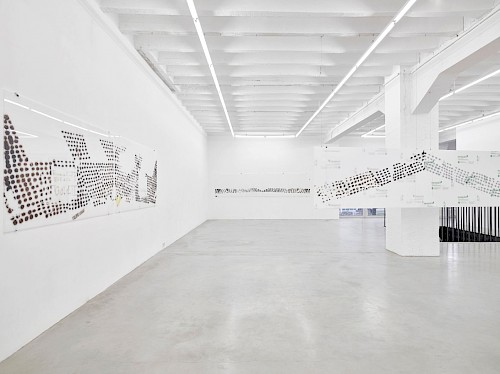
The exhibition features four new diptychs, painted in tar (and a bit of paint) on white acrylic glass panes. More specifically, one pane in each pair was painted on; then a second pane was pressed down on it to produce a mirror-inverted decal of the first. The resulting pair of pictures is reminiscent of Rorschach tests, whose random structures leave room for psychological interpretation. But it also looks like a thematic complex that was convoluted and sticky enough as it was duplicated itself to make everything yet more complicated. Who is guilty of, bears responsibility for what in this muddle? What came first, what happened later? Can we even establish a critical logic of situations and events? How can we exit the dialectic of weird victim-perpetrator constellations?
Groups of black dots fan out into armies, columns, occupied territories. Controversies and clashes are about to erupt into the pictorial space. Also appearing: a Prussian spiked helmet, the logo of the Prussian Cultural Heritage Foundation (SPK), miniatures of the splendid modern bathrooms at Cecilienhof Palace. “If you say Prussia,” the lettering on one acrylic glass pane reads; the other completes the sentence: “you get Hohenzollerns.” On another, one can make out the silhouette of a cart, with a chest on it. An inscription warns, not once but twice: “Caution Gold.” A fairy-tale motif from “The Robber Hotzenplotz,” whom Kasperl and Seppel try to dupe with a fake hoard of gold. The viewer has to look for all these tenuous visual and verbal clues, as though to confront the pictures were to embark on a research expedition designed to give the traces meaning. But there’s no cohesive (critical) narrative waiting to be extracted.
And for good reason. Dierk Schmidt is a history painter. Remember? History painting, that fusty and ponderous genre, relating decisive events in history in the form of pictures that typically endow their subjects with a mythical aura. Schmidt has given the genre a different twist, looking beyond entrenched ideas and techniques of representation. It almost feels like the engagement with a revolting chapter in more recent German history has alienated the artist from his own medium of articulation, painting. Setting out what manifests itself, what we can know and make sense of, Schmidt everywhere leaves baffling gaps. Blanks and information eye each other with a distrust that makes your blood run cold and puts a damper on your desire for truth. Even the postmodern truism that history is a construction absconds from the pictures. What remains are constituent dots compressed to form blots and arrayed under helmets that do not bode well.
Die Ausstellung zeigt vier neue Doppelbilder, mit Teer (und wenig Farbe) auf weiße Plexiglasplatten gemalt. Genauer: Je eine Platte wurde bemalt und dann auf eine zweite gepresst, sodass ein spiegelbildlicher Abklatschdruck der ersten entstand. Das resultierende Bildpaar erinnert an Rorschachtests, deren Zufallsstrukturen Raum für psychologische Ausdeutung bieten. Aber es scheint auch, als habe sich ein ohnehin schon zäher, klebriger Themenkomplex verdoppelt, um alles noch komplizierter zu machen. Was ist hier schuld an was? Was kam zuerst, was später? Bekommt man hier noch eine kritische Logik der Verhältnisse und Ereignisse hin? Wie kommt man aus der Dialektik verquerer Opfer-Täter-Konstellationen wieder heraus?
Gruppen schwarzer Punkte formieren sich zu Heeren, Kolonnen, besetzten Territorien. Kontroverse Zusammenstöße zeichnen sich im Bildraum ab. Mittendrin eine preußische Pickelhaube, das Logo der Stiftung Preußischer Kulturbesitz (SPK), Miniaturen der vorzüglichen modernen Badezimmer im Schloss Cecilienhof. „Wer Preußen sagt“, steht auf einer Plexiplatte, „bekommt Hohenzollern“, steht auf einer zweiten. Und da zeichnet sich ein Karren ab. Auf dem steht eine Kiste. „Vorsicht Gold“ steht darauf, gleich zweimal. Ein Märchenmotiv aus dem „Räuber Hotzenplotz“, den Kasperl und Seppel mit einem falschen Goldschatz hereinlegen wollen. All diese spärlichen Bild- und Schriftzeichen muss man suchen, so als begäbe man sich vor den Bildern selbst auf eine Recherche, um den Spuren Sinn zu geben. Eine kohärente (kritische) Erzählung bekommt man indes nicht.
Und auch das hat seinen Grund. Dierk Schmidt ist Historienmaler. Man erinnert sich? Historienmalerei, das alte, gewichtige Genre der bildlichen Nacherzählung geschichtlicher Momente von Tragweite, meist mythisch überhöht. Schmidt hat dem Genre eine andere Wendung gegeben, jenseits alter Begriffe und Techniken der Repräsentation. Fast scheint es, als habe sich der Künstler angesichts eines abstoßenden Kapitels der neueren deutschen Geschichte selbst vom eigenen Ausdrucksmedium, der Malerei, entfremdet. Zwischen dem, was sich zeigt und was wir wissen und zuordnen können, lässt Schmidt überall spröde Lücken. Leerstellen und Informationen schauen sich gegenseitig an, dass dem Wunsch nach Wahrheit schaurig wird. Selbst die postmoderne Binsenweisheit, dass Geschichte gemacht wird, flieht aus den Bildern. Was bleibt, sind zu Klecksen verpresste Bildpunkte, die unter Pickelhauben aufmarschieren und nichts Gutes verheißen.
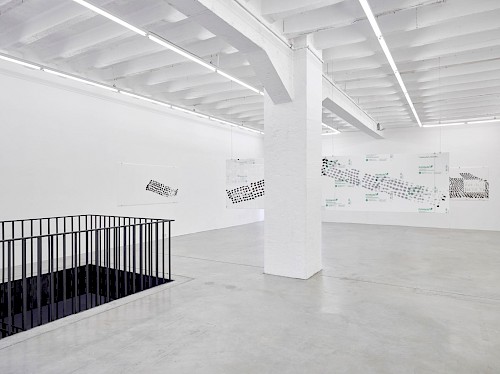

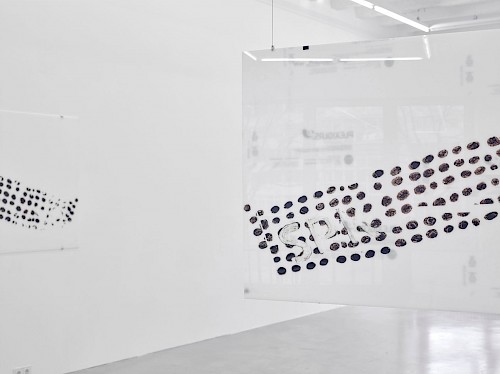

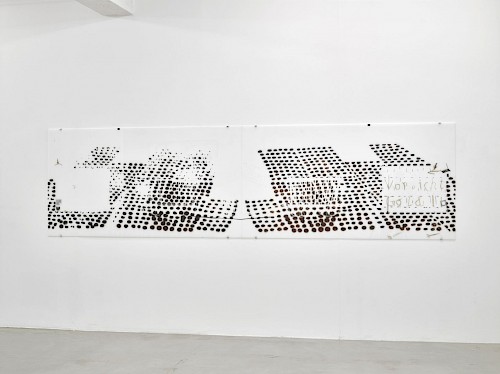
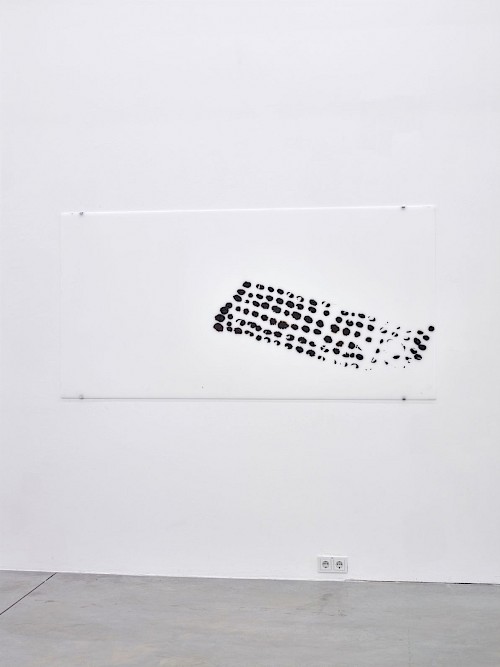
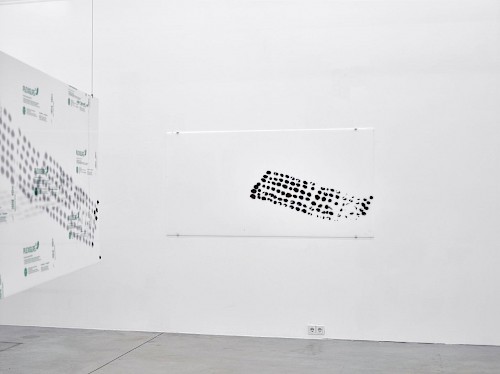
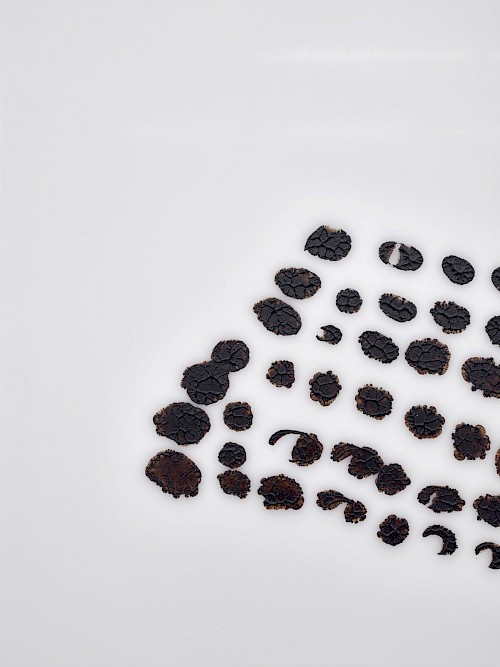
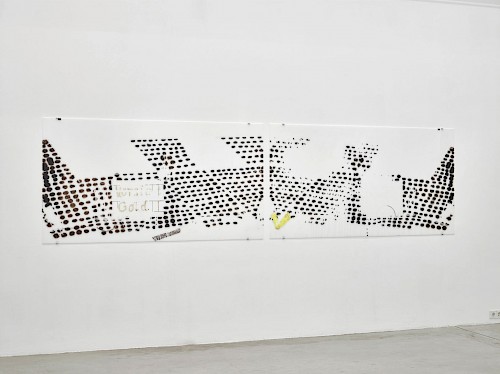
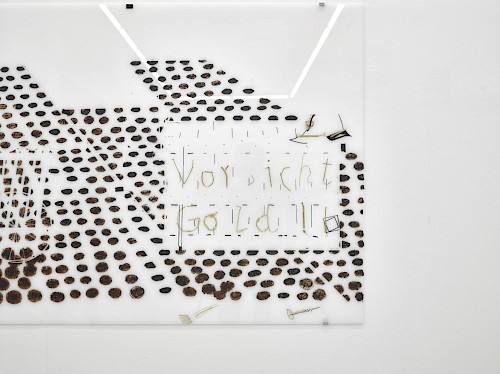
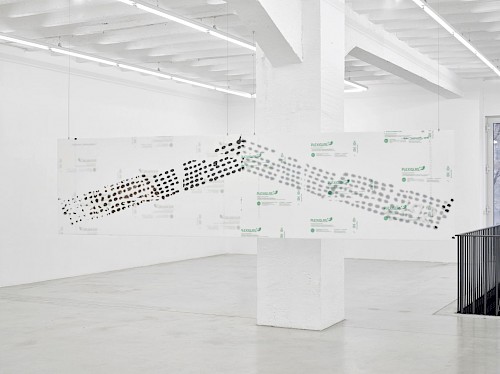
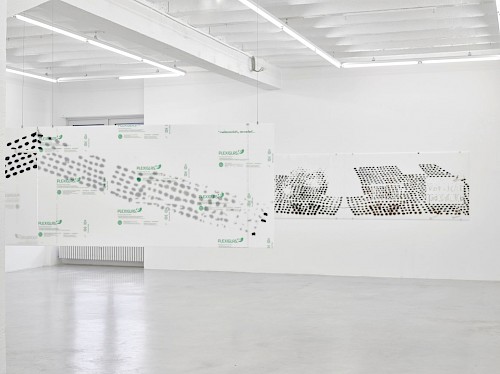
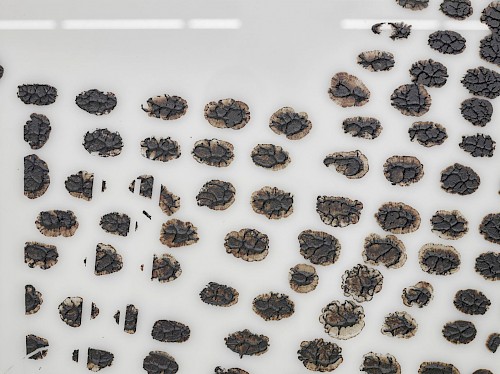

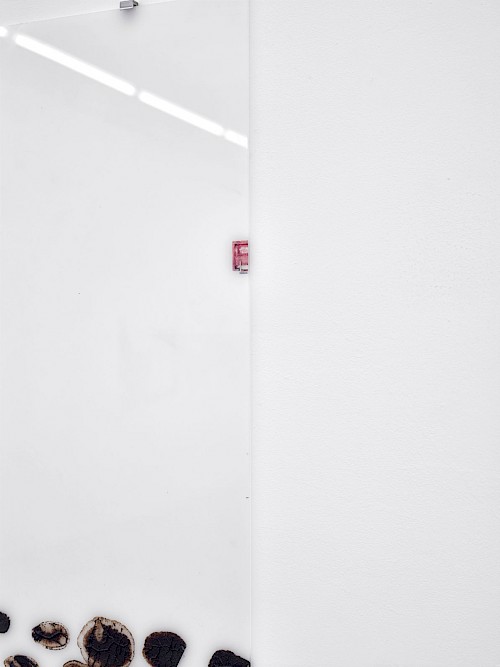


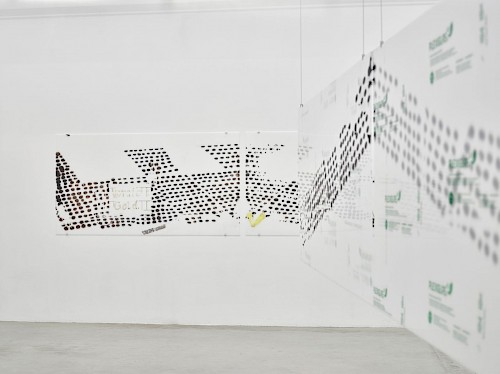

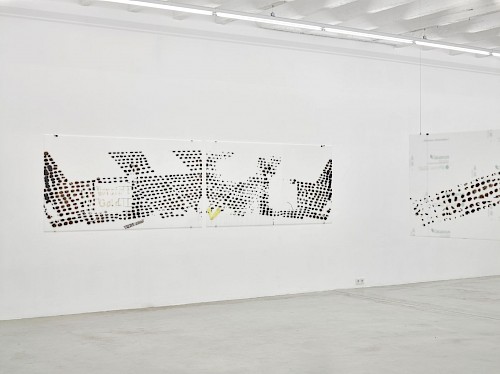
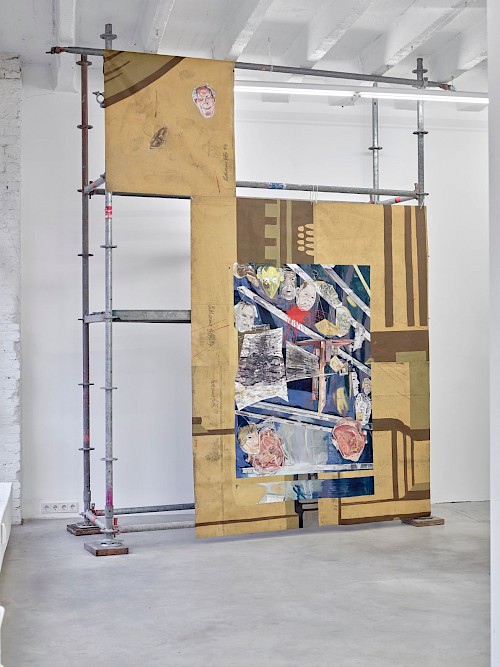
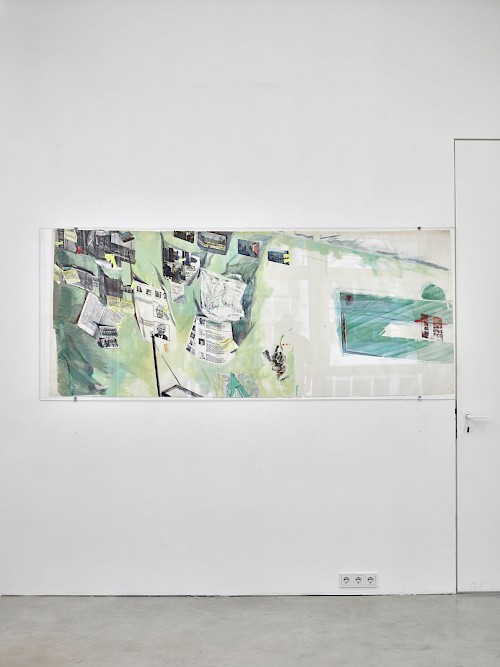

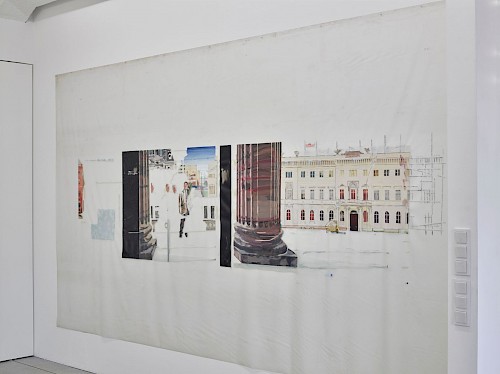

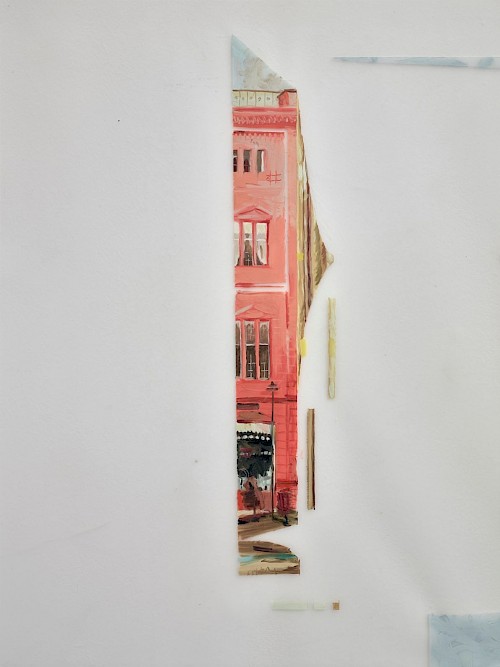
- Current
- Upcoming
- 2025
- 2024
- 2023
- 2022
- 2021
- 2020
- 2019
- 2018
- 2017
- 2016
- 2015
- 2014
- 2013
- 2012
- 2011
- 2010
- 2009